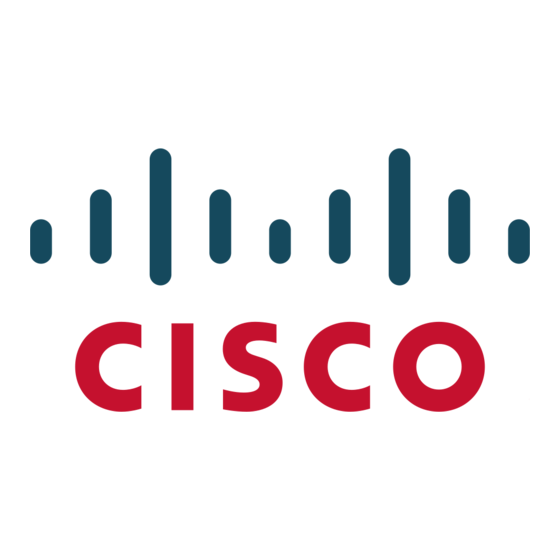- ページ 30
ネットワーク・ルーター Cisco 1751のPDF クイック・スタート・マニュアルをオンラインで閲覧またはダウンロードできます。Cisco 1751 35 ページ。 Modular access router
Cisco 1751 にも: ソリューションの概要 (16 ページ), データシート (19 ページ)

List of Terms
List of Terms
This section defines some of the VoIP terms and concepts used in this guide.
BRI—Basic Rate Interface, an ISDN interface.
CIR—Committed information rate. The average rate of information transfer a subscriber (for example,
the network administrator) has stipulated for a Frame Relay PVC.
Call leg—A segment of a call path, for instance, between a telephone and a router, a router and a
network, a router and a PBX, or a router and the PSTN. Each call leg corresponds to a dial peer.
Destination pattern—The pattern of numbers that identifies the destination of an incoming call; in other
words, a phone number.
Dial peer—A software object that ties together a voice port and a local telephone number (local dial
peer or POTS dial peer) or an IP address and a remote telephone number (remote dial peer or VoIP dial
peer). Each dial peer corresponds to a call leg.
DTMF—Dual-tone multifrequency. Use of two simultaneous voice-band tones for dial (such as touch
tone).
E.164—The international public telecommunications numbering plan. A standard set by ITU-T
that addresses telephone numbers.
E&M—A signaling technique for two-wire and four-wire interfaces that provide connections to PBX
trunk lines (tie lines).
FXO—Foreign exchange office, a type of VIC interface. Using a standard RJ-11 modular telephone
cable, the FXO VIC connects local calls to a PSTN central office or to a PBX. This is the interface a
standard telephone provides.
FXS—Foreign exchange station, a type of VIC interface. The FXS VIC connects directly to a standard
telephone, fax machine, or similar device over a standard RJ-11 modular telephone cable, and supplies
ringing voltage, dial tone, and similar signals to it.
HDLC—High-Level Data Link Control. A data link layer protocol that specifies a data encapsulation
method on synchronous serial links using frame characters and checksums.
MTU—Maximum transmission unit. Maximum packet size that a particular interface can handle.
Multilink PPP—Multilink Point-to-Point Protocol, a method of splitting, recombining, and sequencing
datagrams across multiple logical data links.
NANP—North American Numbering Plan.
PBX—Private branch exchange, a private telephone switching system.
POTS—Plain old telephone service. Basic telephone service supplying standard single line telephones,
telephone lines, and access to the public switched telephone network.
POTS dial peer—A software object that ties together a voice port and the telephone number of a device
attached to the port (also called local dial peer).
PRI—Primary Rate Interface, an ISDN interface.
PSTN—Public switched telephone network.
PVC—Permanent virtual circuit.
QoS—Quality of service, a measure of the level of performance needed for a particular application, such
as a VoIP connection.
RSVP—Resource Reservation Protocol, a network protocol that enables routers to reserve the
bandwidth necessary for reliable performance.
Cisco 1751 Voice-over-IP Quick Start Guide
30
78-11259-05
